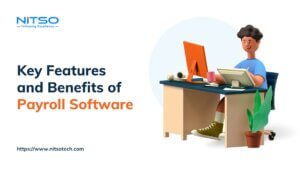Knowing where your money is coming from and going is crucial to building personal wealth with the economy in constant flux. This understanding also applies to corporate finance, as industry changes directly affect how enterprises grow and build capital. Effectively managing your finances is key.
For corporations, this means having a structured accounts payable system to ensure a healthy balance of vendor payments and incoming cash flow. For employees, utilize cutting-edge wealth management tools to help set goals, manage money, and learn about investment opportunities. It all comes down to developing a system that allows the most control over your finances in a way that works for you and your business.
Content On This Page
Establish an Accounts Payable Management Strategy
Accounts payable (AP) refers to a business’s financial obligation to any vendors or suppliers that provide them with goods or services. This process is often based on credit and managed by a dedicated accounts payable department that verifies invoices and issues payment. Without an established system, companies risk falling behind on payment, tarnishing vendor relationships, and having inadequate funds on hand to continue production and pay employees.
Stampli, a leader in accounts payable automation software, surveyed finance leaders in 2022 to gauge their expectations of AP teams. 63% indicated that AP teams’ responsibilities will most likely increase. With this additional responsibility, companies will require teams to spread attention across more focal points, potentially leading to more errors throughout the accounts payable process.
Embrace Automation Into Your Accounts Payable Process
Automation helps AP departments to concentrate on other immediate tasks.
These are a few ways automation can enhance your AP strategy:
- Simplify the process: eliminate any unnecessary steps that don’t support the end goal of your AP system.
- Improve data accuracy: avoid costly mistakes and consider setting AP metrics to track the accuracy of the process.
- Strengthen internal controls: create audit trails and approval policies to prevent unauthorized payments.
- Encourage collaboration: integrate a centralized system with access to multiple departments to streamline cross-functionality.
- Build positive vendor relationships: track and update vendor contracts and invoices as needed to allow prompt payments with minimal delays.
How Accounts Payable Affects Employee Wealth
Although accounts payable may not directly impact an employee’s finances or benefits, it does affect the business’s financial health. That will influence an employee’s position and benefits, resulting in a trickle-down effect.
Managing AP is a balancing act to keep the cycle running smoothly.
If the cycle stalls because of late vendor payments or a drop in sales, this stall affects employees in several ways:
- Job security: A financially unstable company may suffer from a financial crisis, which could lead to employee layoffs and workforce downsizing.
- Compensation, bonuses, and benefits: Every organization relies on its financial health to stay in business and offer its employees fair and competitive salaries.
- Learning and development opportunities: Without steady financial growth, companies are less inclined to invest time and money into employee training and development programs.
- Retirement plans: If your business is impacted by poor AP management, this will limit the contribution you can make to your employees’ retirement plans.

Four Ways to Approach Employee Wealth
The future of financial planning has drastically changed in recent years, especially in the aftermath of the COVID-19 pandemic. After the pandemic, 20% of Americans said they made significant changes to their financial plans as a direct response to it.
Building employee wealth isn’t just a plan for their retirement but a necessity no matter what stage of life your employees are in. Thankfully, with constant technological advancements, financial technology (fintech) is more accessible to consumers.
Fintech management apps allow people to take control of their finances in a simple, straightforward approach. Consumers gain access to features like bill pay, credit tracking, and overall net worth views.
Let’s examine four ways to build employee wealth with the help of fintech apps.
1. Set Financial Goals
Start by figuring out your financial goals. This process includes auditing your current finances to give you an idea of where to go from there.
Your goals will inherently dictate the type of management tools and apps you search for. Are you interested in investments or doubling your savings?
Consider these while you determine the areas you want to focus on as you build your wealth.
2. Choose a Compatible Financial Management App
Your goals will influence the tools that are best suited for what you want to achieve. Most apps include features such as budgeting and bill pay capabilities, as well as balance and transaction tracking.
If your goals go beyond the basic financial planning goals, you’ll need to research each tool to ensure they provide the right assistance.
Additional valuable features include the following:
- Overall wealth management: View all your accounts and assets in one central location.
- Track your credit score: Easy access to monitoring your credit may be beneficial if you want to improve your score over time.
- Investment advice and assistance: Find tools designed to assist you with investing.
- Connectivity through multiple devices: Access your financial planning on multiple devices for flexibility.
3. Diversify Your Investments
Investing in stocks is no longer the gold standard of investment opportunities. To consistently build your wealth and portfolio, consider alternative investment opportunities.
Real estate is a popular type of investment, and it’s also easy to understand. The good thing about real estate is that it hardly feels the effects of market swings, meaning you won’t lose out on the money you invested in your property if the market takes a hit. The same applies to collectibles and heirlooms.
Cryptocurrencies and digital assets are two trending types of investments for many tech-savvy investors. These assets are strictly digital, with the appeal that they’re relatively easy to get started with.
4. PYF: Pay Yourself First
The idea behind paying yourself first is simple—maximize your savings and investments. In a way, it’s similar to treating yourself as a business. Set aside money each pay period to different savings accounts before you have a chance to spend it on other things, like bills or debt.
Here are a few examples of where to allocate your money:
- Emergency fund
- Retirement savings
- Higher education
- Investments
To stay on top of paying yourself first, set up automatic transfers. This one change in how you distribute your money can jumpstart your journey in building personal wealth.
Moving Toward Wealth Management
There’s no denying the importance of embracing technology as an integral part of conducting business. Both corporations and employees benefit from using technology in their financial planning strategies.
Whether through a robust accounts payable system or utilizing wealth management tools, you must leverage technology in a way that works to your advantage to help you grow and maintain capital to help meet your goals.








0 Comments